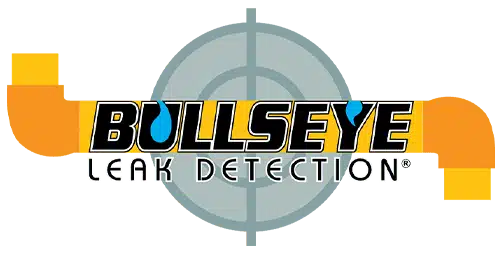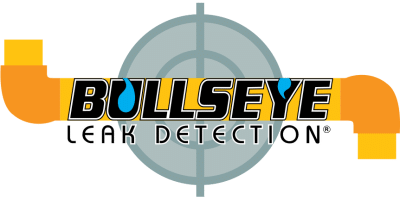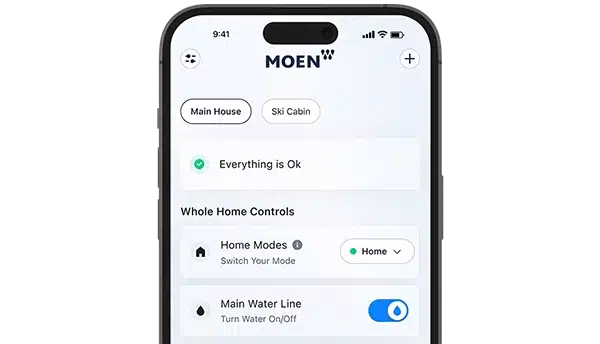Repiping a house isn’t something most people plan for—but when persistent leaks, discolored water, and low water pressure become part of daily life, it’s often a sign that your plumbing system is deteriorating. In many cases, a full repipe is the most reliable way to restore water quality, protect your property, and avoid costly damage down the line.
At Bullseye Leak Detection, our repipe specialists are experts in leak detection and home repipes that are clean, efficient, and built to last. Whether you’re seeing signs of corrosion or dealing with water damage, we’re here to walk you through the repipe process.
What Is Repiping a House?
Repiping means replacing all the old, deteriorating water supply lines in your home with new, reliable piping. This isn’t a temporary patch or quick fix. It’s a full-scale plumbing refresh that eliminates hidden leaks, improves water volume, and protects your home for decades to come.
The repipe process generally involves:
- Mapping out the new plumbing route
- Abandon old galvanized, copper, or defective piping material
- Installing new pipes
- Connecting everything back to your fixtures
- Patching and repairing walls, ceilings, or floors where access was needed
Watch our quick video below to see a home repipe in action!
Signs You Need to Repipe Your House
Knowing when it’s time to repipe isn’t always obvious—until the warning signs become impossible to ignore. If your plumbing system is aging or showing signs of failure, addressing the problem early can prevent extensive damage and costly emergency repairs.
Here are the most common indicators that it may be time for a full home repipe:
- Frequent Leaks
- Rust-Colored or Murky Water
- Low Water Pressure
- Visible Corrosion or Staining
- Pipes Made from Outdated Materials: galvanized steel, Kitec, Quest, or Dura Pex
If you’re seeing any of these symptoms, your plumbing system may be nearing the end of its lifespan. A professional inspection can confirm the extent of the issue and help you determine whether a full repipe is necessary—or if a targeted reroute will do the job.
How Much Does It Cost to Repipe a House?
The cost to repipe a house depends on the size of your home, the number of bathrooms, and the type of piping you choose. We recommend a walkthrough with one of our skilled technicians to discuss your plumbing needs and the configuration of your home.
Things to consider:
- Will you need additional water for landscaping?
- Do you want to add an icemaker line in the kitchen?
- How about a bar sink in the living room?
- The final cost can vary depending on layout complexity and pipe accessibility.
- PEX is the most cost-effective option; it is flexible and resistant to corrosion.
- Copper is more durable but comes at a higher price point.
- We don’t recommend CPVC due to potential failure at the connections.
You might also consider the length of time it takes for hot water to reach the far end of the home for showering or washing dishes. Adding a recirculation system could save water and provide a reliable solution.
Visit our Reroute & Repipe service page for more details or to request a personalized estimate.

How Long Does It Take to Repipe a Whole House?
In most cases, repiping a house takes 3 to 7 days, depending on the home’s size, plumbing layout, and how accessible the piping is. You won’t be without water the entire time—we try to minimize water disruption to the latter part of the project when we switch over to the new system.
How Invasive Is Repiping a House?
This is the part homeowners worry about most—and rightfully so. Yes, some drywall needs to be removed to access pipes behind walls, under floors, and above ceilings. But we promise:
- No random holes—we are extremely discerning in where we make cuts.
- We protect your flooring and furniture.
- No clawhammers here. We cut clean pieces and secure sheetrock back in place wherever we can, ready for your sheetrocker to patch and texture match.
Can You Repipe a House Without Removing Drywall?
Sometimes, yes! If your home has accessible attics, crawl spaces, or drop ceilings, we can route much of the piping without cutting into walls. But in most cases, a few surgical cuts are needed. Our goal is to keep it as non-invasive as possible.

What’s the Alternative to Repiping a House?
Not quite ready to commit to a full repipe? Here are a few alternatives:
- Spot repairs – Good for isolated leaks, but not a long-term solution.
- Epoxy lining – Coats the inside of pipes but was found to be an inappropriate solution for potable water pipes as pressure can strip it and contaminate drinking water.
- Rerouting – An effective solution when repiping the whole house isn’t necessary. We reroute around damaged areas to restore flow.
How Do I Prepare My House for Repiping?
Good news: prepping is simple.
- Clear access points: Under sinks, around water heaters, and behind toilets.
- Secure pets: Curious animals and open walls don’t mix.
- Plan ahead: We’ll keep water running as long as possible to minimize disruption, so plan ahead for bathroom use, prepping meals, and showering.
We’ll walk you through everything before we start—so there are no surprises.
Final Word: Is Repiping a House Worth It?
If you’re dealing with old galvanized or defective piping, rusty water, recurring leaks, or water damage, repiping your house is a smart, permanent solution. It boosts home value, improves water quality, and saves money over time.
Bullseye’s Central Valley reroute & repipe services are designed to be fast, efficient, and minimally invasive—so your home stays comfortable throughout the process.





